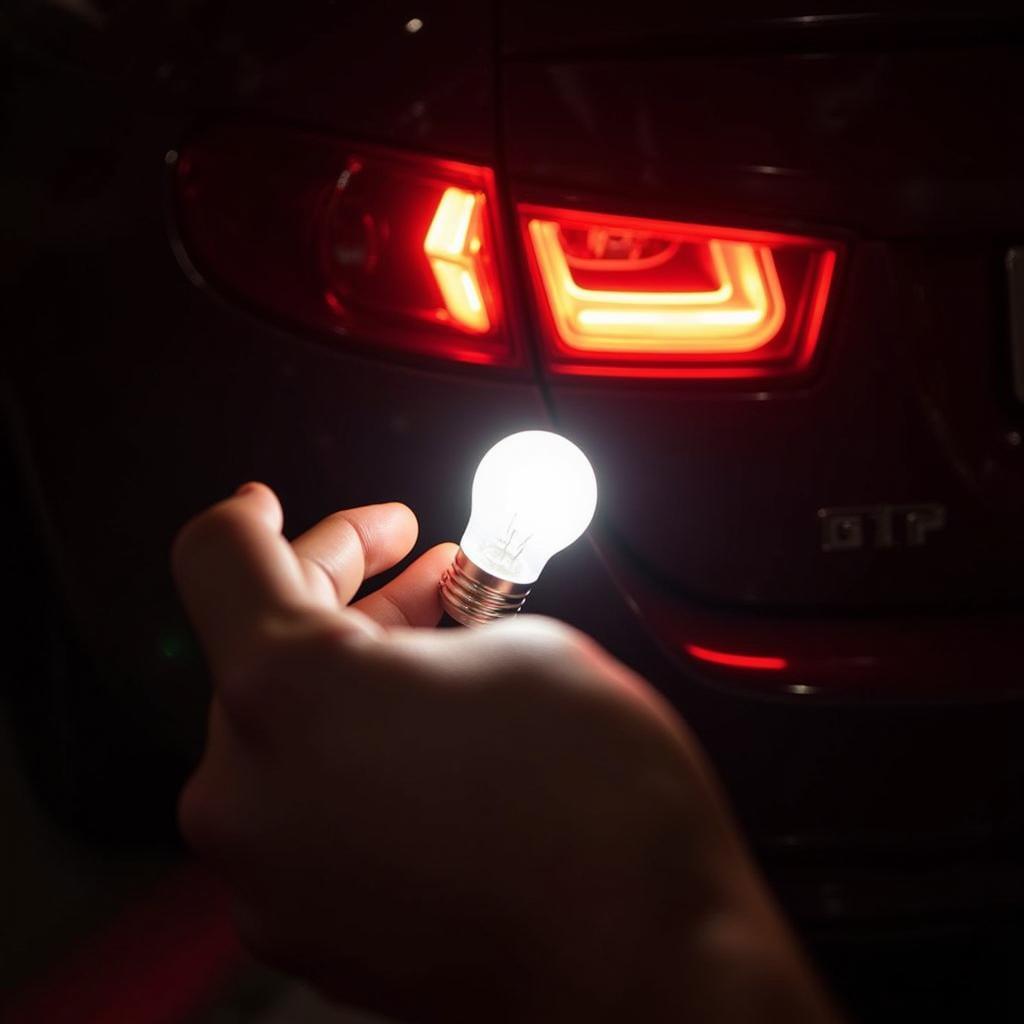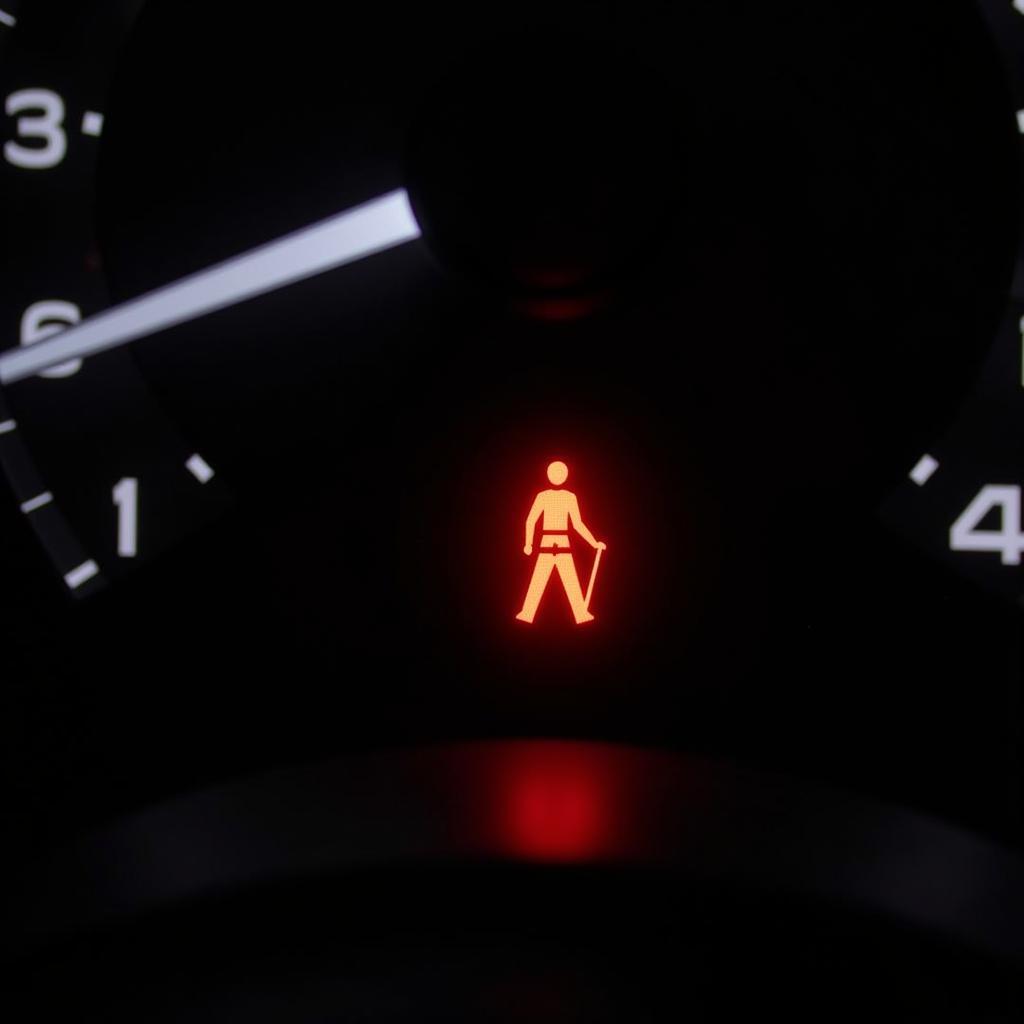The dreaded LED brake light warning on your dashboard can be a real head-scratcher. You hit the brakes, the lights seem to be working fine, yet that persistent warning light refuses to budge. Don’t worry, you’re not alone! This comprehensive guide will delve into the common causes behind this issue and equip you with the knowledge to tackle it head-on.
Why is My LED Brake Light Warning On?
Before we dive into solutions, it’s crucial to understand why this warning appears in the first place. Your car’s computer system constantly monitors the electrical circuits, including those powering your brake lights. With traditional incandescent bulbs, a burned-out filament leads to a complete circuit break, triggering an immediate warning. However, LEDs are a different beast altogether. Their lower energy consumption can sometimes cause the system to misinterpret a slight resistance change as a fault, even if the lights are functioning correctly. Other culprits could be:
- Faulty LED Bulbs: While LEDs boast a longer lifespan, they’re not invincible. A malfunctioning LED bulb can disrupt the circuit, triggering the warning.
- Wiring Issues: Corrosion, loose connections, or damaged wiring in the brake light circuit can lead to resistance fluctuations, confusing the system.
- Bulb Out Indicator Circuit: Some vehicles have a dedicated circuit to monitor bulb health. If this circuit malfunctions, it can trigger a false warning.
- Aftermarket LED Installations: Installing aftermarket LED brake lights without proper resistors or compatible components can lead to impedance mismatches, setting off the warning light.
Troubleshooting Your LED Brake Light Warning
Now, let’s roll up our sleeves and get to the heart of the matter – fixing that pesky warning light. Remember, safety first! If you’re uncomfortable working on your vehicle’s electrical system, it’s always best to consult a qualified mechanic.
1. Inspect the LED Bulbs:
Begin with the basics. Visually inspect all your LED brake lights. Look for any signs of dimming, flickering, or complete outage. If you spot a faulty bulb, replace it with a new one of the same type and specifications.
 Inspecting LED Brake Light Bulbs
Inspecting LED Brake Light Bulbs
2. Check the Wiring:
Carefully examine the wiring harness connected to each brake light assembly. Look for any signs of damage, fraying, or loose connections. If you find any issues, repair or replace the affected wiring sections.
 Checking Brake Light Wiring Harness
Checking Brake Light Wiring Harness
3. Test the Brake Light Circuit:
Using a multimeter, check for continuity and voltage in the brake light circuit. This step requires some electrical know-how, so refer to your vehicle’s wiring diagram or seek professional assistance if needed.
4. Address Aftermarket LED Installations:
If you’ve recently installed aftermarket LED brake lights and the warning appeared afterward, chances are the new lights are causing impedance issues. Consider installing load resistors or using LED bulbs specifically designed to be compatible with your vehicle’s electrical system. You can find resources and guides like this nsx wiring led brake lights bypassing light out warning for specific car models.
5. Consult a Professional:
If your troubleshooting efforts prove futile, don’t hesitate to seek help from a qualified automotive electrician or mechanic. They have the expertise and diagnostic tools to pinpoint and resolve complex electrical issues.
Why Do My LED Brake Lights Trigger a Warning After Installation?
This is a common question among car enthusiasts who’ve upgraded to LED brake lights. The answer lies in the difference in electrical resistance between incandescent bulbs and LEDs.
Incandescent bulbs have a higher resistance, drawing more current when illuminated. Your car’s computer system is calibrated for this higher current draw. When you switch to LEDs, their lower resistance results in a lower current draw. The system interprets this drop in current as a bulb failure, triggering the warning light.
To overcome this, you can install load resistors in parallel with the LED bulbs. These resistors mimic the resistance of incandescent bulbs, ensuring the current draw remains within the expected range, effectively “fooling” the system. Alternatively, opting for warning strobe brake lights kit led can address this issue while enhancing safety on the road.
Can I Ignore the LED Brake Light Warning?
The short answer is a resounding NO. While it might be tempting to dismiss the warning as a mere annoyance, especially if your brake lights seem to be functioning normally, ignoring it can have serious consequences.
Remember, the warning light indicates a potential issue with your brake light circuit. Even if the lights are working intermittently, a fault in the system could lead to their complete failure at a critical moment. This puts you and other road users at risk.
Expert Insights
“Many car owners underestimate the importance of addressing warning lights promptly,” says automotive electrician Mark Stevenson. “The LED brake light warning, in particular, should never be ignored. It’s often a symptom of a larger electrical issue that needs immediate attention.”
Conclusion
A persistent LED brake light warning is not something to be taken lightly. By understanding the potential causes and following the troubleshooting steps outlined in this guide, you can diagnose and resolve the issue effectively. Always prioritize safety and seek professional help if you’re unsure about any aspect of the repair.
For model-specific solutions, you can find detailed guides like is300 brake light warning with led lights or installed led brake lights now warning light on to address your specific vehicle. Remember, a properly functioning brake light system is crucial for your safety and the safety of others on the road.


